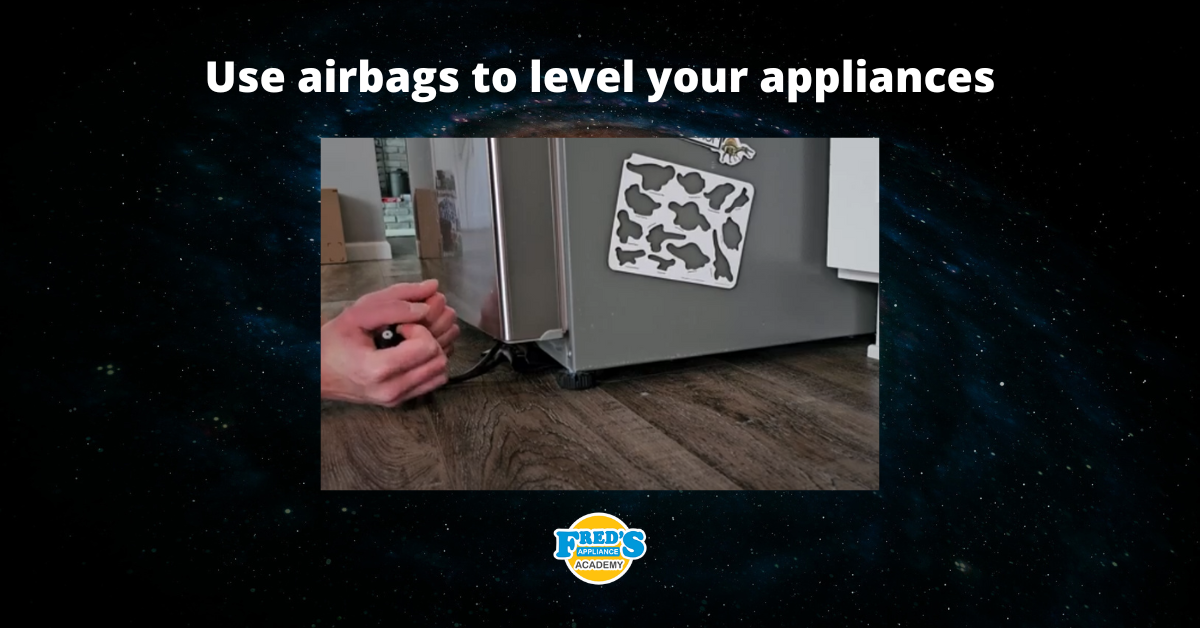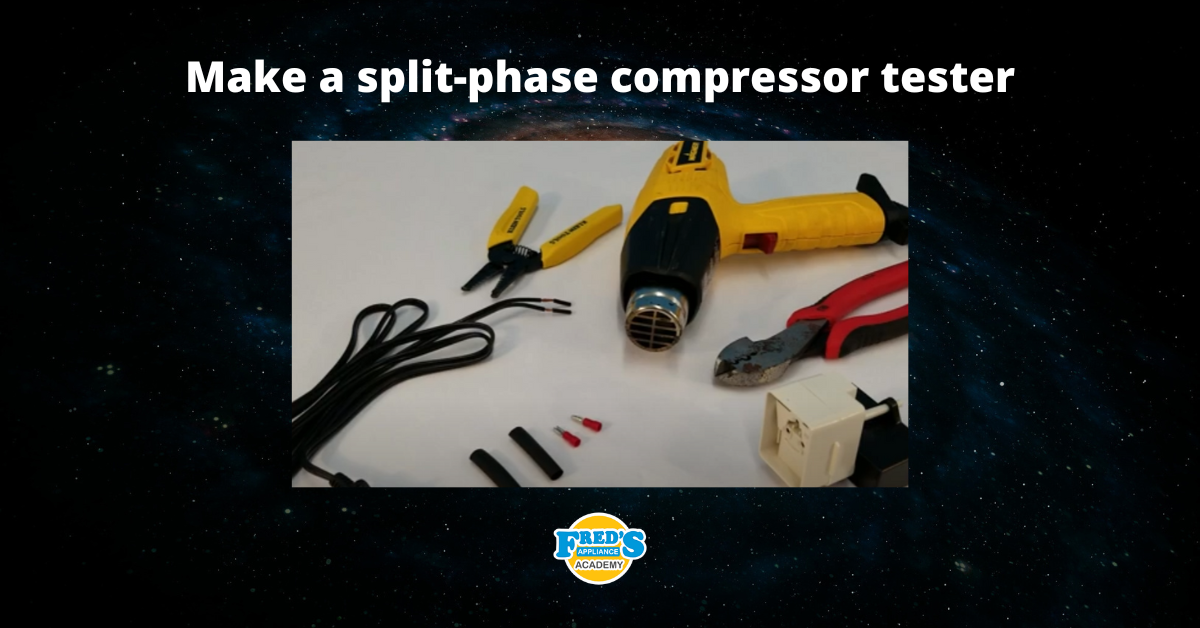
Appliance repair involves a number of specialty tools. You may need a resettable fuse, condenser brushes, canned air, and calipers for specialty jobs – and there are more than a few specialty jobs to be done every year. However, the vast majority of appliance repairs can be performed with a short and common list of tools. Those who are unfamiliar with the many disassembly instructions for appliances would be surprised to discover that you can perform most standard repairs with a pair of screwdrivers, a putty knife, and a handful of other very simple toolbox supplies.
Let’s dive into the nine most common tools you need on-hand for appliance repairs.
1. Slot and Phillips Screwdrivers
First, you’ll need both types of screwdriver. Phillips head screwdrivers sporting the cross (+) are your primary repair tool. This is how you will remove most of the mounting screws both inside and outside of most appliances. That said, we advise a small variety of size, sharpness, and handle-length depending on the depth and width of each screw – and how easy it is to reach.
Slot screws are rare for appliance hardware, but slot screwdrivers are often essential for releasing tiny metal and plastic clips inside appliance cabinetry. Get a full set of screwdrivers just to be safe.
2. Putty Knife
The putty knife is, surprisingly, the second-most-called-for tool in repairs. A putty knife and slot screwdriver are often used for the same purpose – slipping under a seam in the appliance cabinet and releasing the small clips holding the panels together. To disassemble a washer, dryer, or stove – for example – it’s often necessary to use a putty knife.
Pro Tip: Wrap your putty knife in painter’s or masking tape to prevent scratching appliances.
3. 1/4″ Nut Driver (Nut Driver Set)
When appliances are built for normal users not to gain access, nut-topped screws are used. Some models of appliance and some specific components are often secured with a nut-driver head instead of a screwdriver head. Because not all appliances are the same, it’s best to have a full nut driver set.
That said, the vast majority of the time a nut driver is called for, it’ll be the 1/4 inch. So have your 1/4″ nut driver in your toolkit and ready to go when appliance repair time comes around. You’ll be glad it’s there as backup if you find yourself removing nut-sealed panels or components.
4. Combination Wrench Set
The next set of tools you’ll want is a rack of combination wrenches. These are not always listed on your mandatory tools list, but it’s extremely helpful to have the right wrench size when you need it, both in open and socket ends. One rack of combination wrenches is always a smart addition to the appliance repair toolkit. When you don’t need them to open or close something, you may need them to brace a bolt while you work two sides of a problem.
5. Work Gloves
The outside of appliances are all rounded and smooth-edged to protect the hands of residential users. However, the insides are not so designed for safety. Even the edges of appliance cabinet panels can be sharp and potentially dangerous to touch. In addition to the edges of thin metal panels, there are also sharp small components, circuit boards, and wires that can damage your hands. If there is any current still running through the appliance, you might get a shock.
Work gloves protect you from all or most repair-related injuries. Work gloves that fit well and have a tough protective layer are designed to keep your hands safe from both sharp and hot objects. In addition, many work gloves provide at least a minor layer of insulation against electric shock.
6. Multimeter
A multimeter is an appliance technician’s best friend. Your multimeter’s primary function is to tell you which parts are working as intended and which have stopped functioning in the electrical circuit. A fully broken or burnt-out component will not pass current through, and you can test this with the positive and negative probes of your multimeter.
You can also test components to see if they are channeling the right amount of electricity or creating the right amount of resistance. Use a manual to test each part to discover how well it is functioning. This will tell you if a part needs to be replaced, repaired, or if you should seek the trouble’s cause in a different component.
7. Needle-Nose Pliers
Needle-nose pliers are sometimes necessary for a repair and sometimes they just make repairs a lot easier. A good, sturdy pair of needle-nose pliers can help you hold pieces together, shape wires, and of course, hold and retrieve smaller components. Sometimes a pair of pliers is essential to open a clasp, or close a stiff metal clasp when reassembling. Pliers can also hold two pieces together while you or a friend fasten them with the correct nuts and bolds. Never head out to a repair without at least one set of sturdy needle-nose pliers.
8. Sturdy Towels
Believe it or not, towels are a big part of appliance repair. You lay a towel on the floor to protect it when pulling out the dishwasher. You lay a towel on the table or counter to place a removed panel, or to work on a removed component. A towel will prevent a big mess when you need to drain water lines and drips are inevitable. A towel can also clean up your workspace before a repair is done – so there’s a safe and cleaner place to work – and after a job is done to clean up behind yourself.
Having a few thick utilitarian towels in the repair truck is always a good idea.
9. Wire Cutters
Last but not least, don’t forget a pair of wire cutters. Wire cutters may be included in your pliers but a dedicated set can be vital. There are a surprising number of repairs where a strong pair of wire cutters would have solved the problem. You can cut and clip a new dryer duct, trim and cap dishwasher tines, and may be surprised at the other wire-cutting necessities that come up along the way. So always have a pair handy, just in case. When it comes to appliance repair, there are many specialty tools but these nine are the most commonly used in appliances of every make and model. Contact us today to learn more pro tips, insights, and to take classes on becoming an appliance repair technician.

How to test a gas range ignitor

Congrats to our graduating March 2024 class

How to test a 120 volt receptacle

Congrats to our graduating February 2024 class

Why Is Your Dishwasher Soap Not Dissolving? (5 Easy Fixes)

Refrigerator Dripping Water Inside? 5 Quick Fixes

Appliance Industry 2023 Q4 Results

Congrats to our graduating January 2024 class

Clever ways to use airbags to level your appliances



